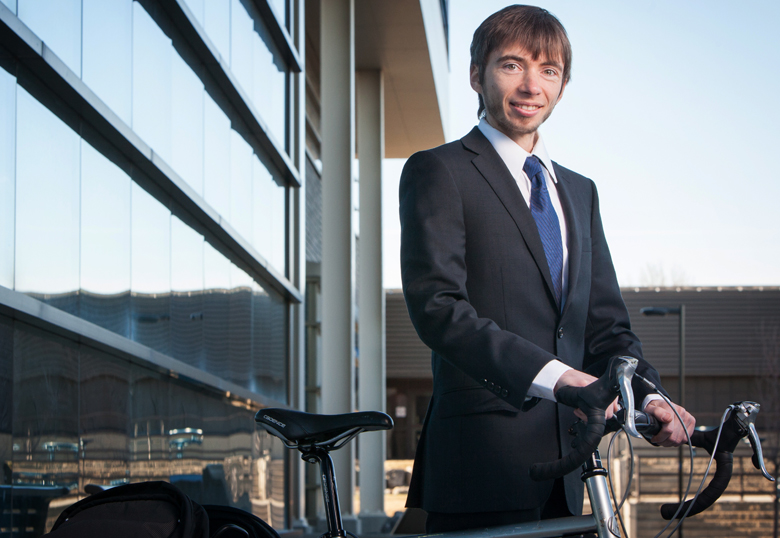The sight of children riding bikes or walking to school has largely been replaced by a lineup of cars and schools buses ferrying them to the front door. While a number of factors have contributed to this trend, no one can deny active transportation for children and youth is on the decline.

Dr. Richard Larouche, a public health researcher in the Faculty of Health Sciences at the University of Lethbridge, sees this as disappointing and in his new book, Children’s Active Transportation, says it’s important to ingrain active transportation habits in children so they continue to be active in their teen and adult years.
“The literature is consistent in respect to the relationship between active transportation and physical activity,” says Larouche. “Those who use it are more physically active and studies in adults have found that those involved in active transportation have lower rates of cardiovascular disease, some cancers, diabetes and so on.”
Travel patterns, he says, are habitual, and children who grow up knowing only cars and buses are less likely to adopt active transportation patterns than those who are active as children.
“Active transportation relates to two of my main research interests. When I was an undergraduate student, I was interested in physical activity but also the environment, which are two quite different topics. This area makes the link between the two,” says Larouche, who, as a child, began walking to school at the age of seven. He’s an avid cyclist today.

“Initially in my PhD studies, I was looking more at the effect of active transportation on physical activity and health-related outcomes, things like fitness, body weight and cardiovascular risk. Recently, I’ve transitioned into looking at what distinguishes children who use active transportation from those who don’t and trying to find new ways to encourage active transportation.”
Larouche is originally from Charlevoix, Que. and completed his undergraduate and master’s studies at Université du Québec à Trois-Rivières. From there, he went to University of Ottawa for his PhD and spent considerable time at Children’s Hospital of Eastern Ontario (CHEO) as part of a research group that worked with children on an assortment of public health issues.
His book is written for a broad audience, appealing to fellow researchers but also advanced students in transportation, urban studies and public health. Transportation and urban planning public officials can also benefit from its insight.
“The book is divided into three main sections. The first looks at benefits of active transportation in terms of health, the environment and the economy. The second section is about the factors that are associated with influencing active transportation, and the third section is about the interventions that exist to promote active transportation, things such as walking school buses and school travel plans,” says Larouche.
He notes that encouraging active transportation involves developing urban infrastructure that supports the behaviour. He also says it goes beyond just trips to and from school.
“In the end, we make the case that most of the current interventions focus on the trip to and from school but there’s a need for interventions to get active transportation to other places. Things like parks, sports fields, shops, all need to be accessible.”
Children’s Active Transportation, 1st Edition, is available from Elsevier.com.
Larouche will launch his book with a public talk on Wednesday, Nov. 21 at 6:30 p.m. in Andy's Place (AH100).
